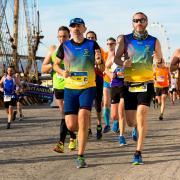
Corona is doing the rounds in West London, with more school children being sent home every day, and an increasing number of year groups forced to self-isolate. But what is actually happening inside the schools that makes Corona spread so rapidly?
Last week, one of my friends, who would rather stay anonymous, caught Covid-19 from school. This might have been from the school buses or from lessons, in which it wasn’t mandatory to wear a mask. Following the surge in Corona cases in the school, it is now mandatory to wear a mask in lessons, and the school buses are split by year group so that they don’t mix. My friend said that "the Upper 6th was self-isolating” and that Year 11 “wasn’t far behind.”
Face masks trap 95% of particles according to the Mayo Clinic. Latymer Upper School took an unpopular approach to Corona at the beginning of the Autumn Term, in that all students had to wear face masks during lessons and were allowed a 10 minute mask break during each period of the day. This had a really positive affect and by half-term (mid October) they were one of the only schools in the UK who hadn’t sent a whole year group home.
Many schools have changed lesson times so that year groups don’t mix, and changed what time different pupils can enter and leave school, again, ensuring year groups mix as little as possible. Most schools also supply hand sanitiser to their pupils.
But boarding schools took the largest hit. Whilst many of them could afford to buy their own testing machine, some have struggled with the volume of Corona cases found in dorms. Dorms have been a breeding ground for the virus, as boarding schools haven’t been allowed to send infected students back home. Some foreign boarders have been advised to stay with their family or have been told that they must self-isolate before and after arriving in the UK. During the half-term holiday, many boarders were told they had to self-isolate to reduce corona numbers in the dorms when they returned.



























